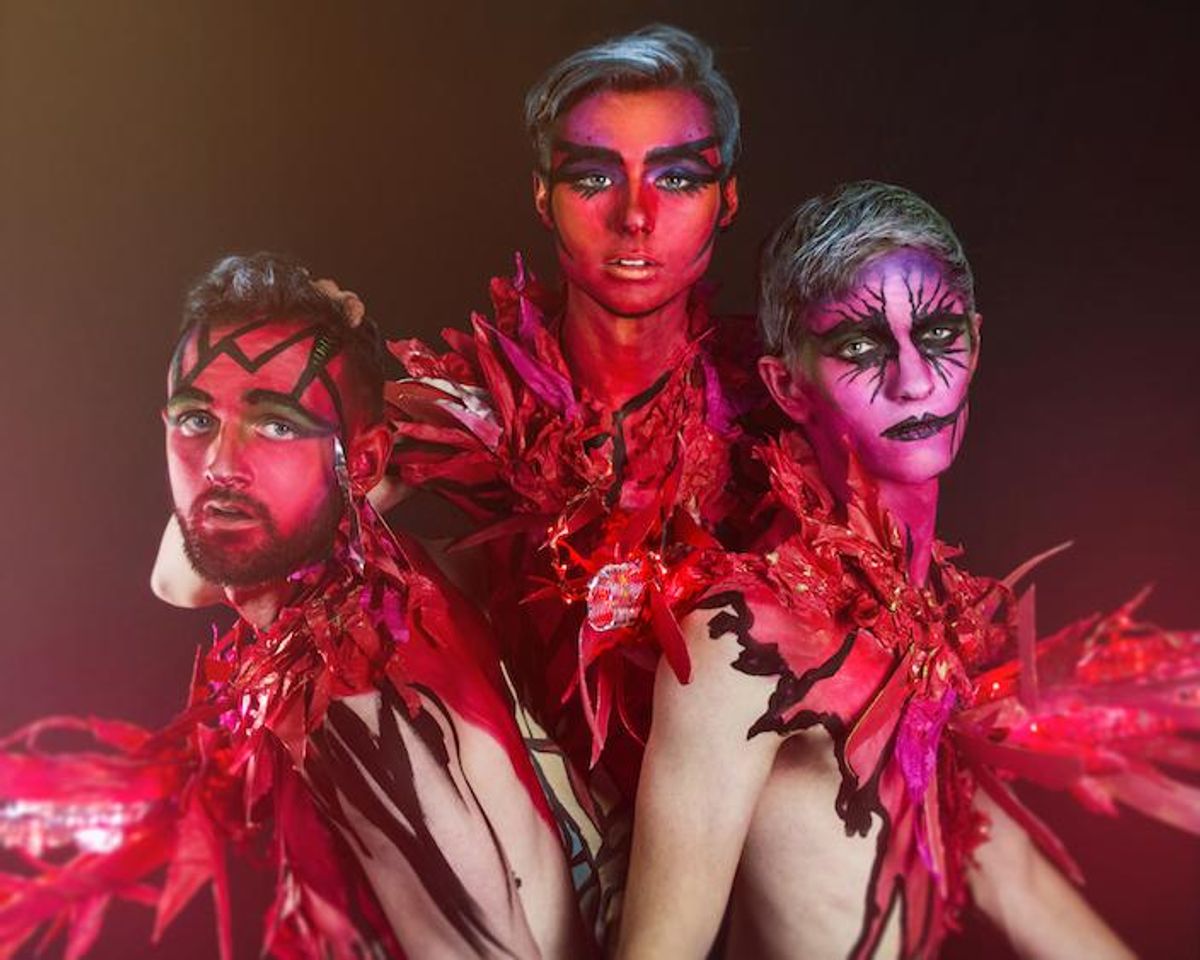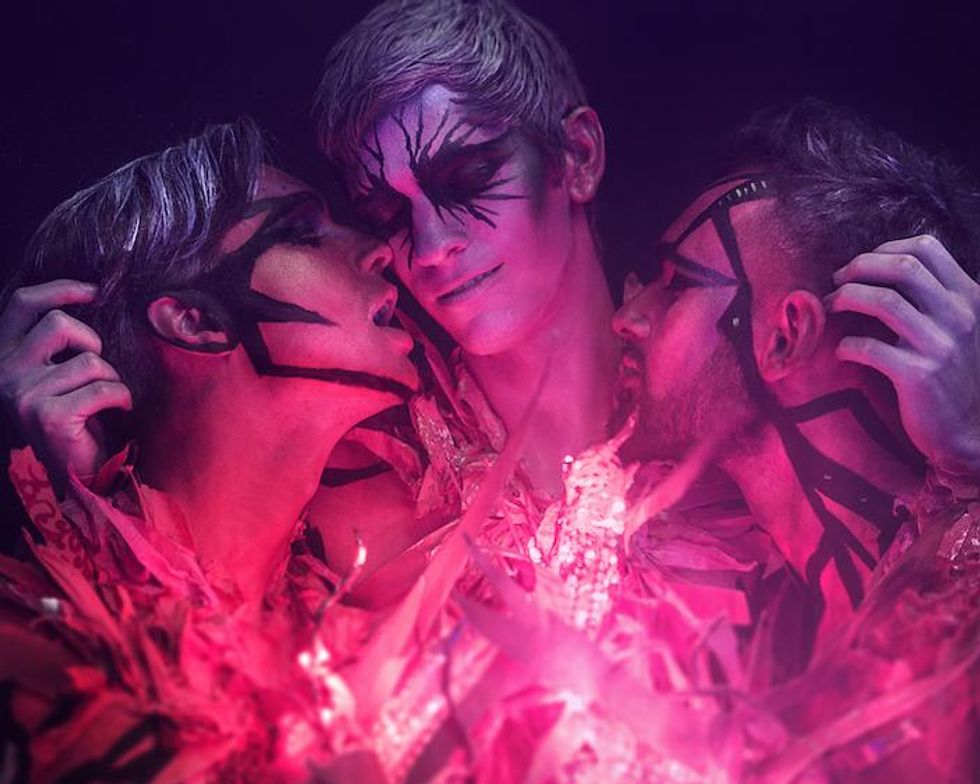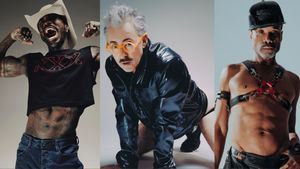Artist Brandon McGill has always been on the frontier of body painting. But the openly gay painter and photographer pushes himself not just to improve his craft, but also to improve himself.
"I paint to figure out what is going on in the world," he said. "You can only be exposed to so much. It's great to see what bonds people together."
The body painter has a new series of portraits, Contact, that displays several couples who differ both sexually and romantically. McGill searched for couples with unique stories--gay, straight, monogamous, polyamorous.
"I wanted to know with each couple, 'What makes you work? What are some of the challenges? And how can I bring those out?'" he said. "I wanted to see how different people valued different things."
SLIDESHOW: 8 Couples Illustrate Their Love Through Body Painting
The intimacy of body painting, McGill said, is ideal for "stripping down the artifices you present every day" and getting at a modeling couple's deeper connection. Then he builds that connection onto the couple's own bodies with bright paint, surreal prosthetics, and often mythical characters.
For one shoot, McGill painted three polyamorous men. To understand what polyamory meant to them, McGill interviewed them--just like all the 27 models that participated in Contact.
"For them, polyamory was about having too much love to give," he said. "You can't put all your love in one person, and not one person can give you everything need in a relationship or in life. It was something beautiful to them."
Together, McGill and the models arrived at the idea of blood-red paint, metal prosthetics and LED lights.
"They have so much love that their hearts are exploding," he said.

Even after the final shot is taken, though, McGill still believes the most meaningful part of his art is more than the finished product. It's how the models connect during the painting.
"When you get someone down to that level (of intimacy), that comfortable, default state, you're allowed in their world," he said. "You see the mannerisms that make them--them. You can see it even in just how someone rests a hand on the other's shoulder or someone asks for a drink of water."
That basic level of intimacy transcends what labels each couple, whether it's a gay man and a transgender woman or a biracial man and woman.
"Different people value different things in their lives, outside the painting itself," he said. "It's about bringing those values into the painting itself."





















































































